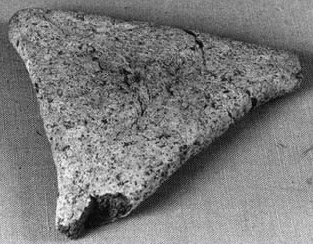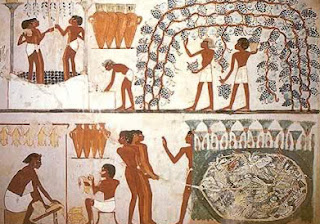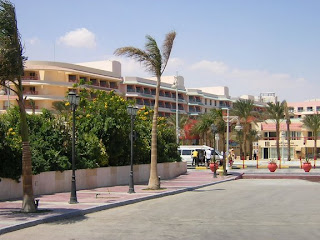When a man is old enough to do something wrong, he is old enough to do something right.
In the last years I heard about a lot of new cases of intimate destruction between old foreign women from USA, Europe, Asia, Australia and Arabian men.
The number of women attempting to form, what they believe as a long term relationship, with men young enough to be their son or even grandson is increasing.
The majority of these women are quite intelligent which makes their behavior more baffling, statistically more than 75% of these cross cultural relationships or pseudo marriages end in divorce or abandonment,
When a dark eyed 22 year old man holds you in his arms and whispers he wants to grow old with you, try to remember you are already approaching 45, 55, 65, and that you are biologically, organically and every other ally one could describe, you are already old. Doesn’t take a genius to work out when you are 80 this guy will still be so young, you’ll be using him as a Zimmer frame.
It seems middle to old age foreign women are acquiring the label ‘sex tourist". Unlike most European or American and Asian holiday destinations, sex outside of marriage is not accepted in Arabic countries.
However in the side alleys and back rooms of certain Lawyers in the Arabian countries you will find the ‘live in sin license.’ The ‘Urfi’ is a piece of paper, a formal contract of intent to marry. It is being used by growing numbers of young Egyptian gigolos simply as a way of getting around religious strictures against having pre-marital sex.
However in the side alleys and back rooms of certain Lawyers in the Arabian countries you will find the ‘live in sin license.’ The ‘Urfi’ is a piece of paper, a formal contract of intent to marry. It is being used by growing numbers of young Egyptian gigolos simply as a way of getting around religious strictures against having pre-marital sex.
For the older post menopausal, sexually active blinkered woman the Urfi is simply a piece of paper which allows her to bring her young gigolo into her home.
Most Arabian guys have a high sense of honour and behave in an appropriate way towards members of the opposite sex.
However tourist areas attract a certain type of predator, the ‘Habibi Boy’
The ‘Habibi Boy’ is only in love with money or the determination to get a visa to a destination where he is simple enough to believe the streets are paved with foreign gold.
Any elderly lady who is conned into thinking the ‘Habibi Boy’ is really in love with her needs her head tested.
Remove your clothes lady, stand in front of a full length mirror and tell me, does your body compare in any shape or form to a 25 year old woman?
Then ask yourself this question: “What normal young man would actually want to sleep with his Granny?
The ‘Habibi Boy’ is only in love with money or the determination to get a visa to a destination where he is simple enough to believe the streets are paved with foreign gold.
Any elderly lady who is conned into thinking the ‘Habibi Boy’ is really in love with her needs her head tested.
Remove your clothes lady, stand in front of a full length mirror and tell me, does your body compare in any shape or form to a 25 year old woman?
Then ask yourself this question: “What normal young man would actually want to sleep with his Granny?
You might have gone to great lengths to explain to this ignorant juvenile the meaning of the female reproductive system, you no longer have the ability to provide him with offspring. You might even take the softly, softly approach because you are too embarrassed to say ‘my reproductive organs have shriveled up to the size of raisins.’
‘Habibi Boy’ will swear he doesn’t care, he doesn’t want children he only wants you. You are his life, his soul and two thousand other descriptions he can fabricate from the romantic songs of Amr Diab.
‘Habibi Boy’ will swear he doesn’t care, he doesn’t want children he only wants you. You are his life, his soul and two thousand other descriptions he can fabricate from the romantic songs of Amr Diab.
So an year down the road, why is it he disappears to his hometown or in the village he came out from after convincing you to invest in a little business, one which his brother can run for you both? The little business usually involves Shaorma.
Your financial investment is used for a big slap-up village wedding with a young bride his family have chosen for him; nine months later he becomes a ‘daddy Habibi Boy.’ You are crushed, your whole world has fallen apart, you remind him of all the beautiful lies he has told you. He insists everything he said was true. He swears he didn’t want to marry the young, beautiful bride but his father insisted and he must obey his father.
He also tells you nothing will change and in his head he believes this. The only difficulty in this equation now is your funds are getting less and you will have two more members of a family you didn’t subscribe too.
Of course you do have a choice, accept the situation where your little love nest becomes the little half way house, or kick him out.
Unfortunately many women are accepting this situation for some unknown psychological reason known only to them.
Their lives are miserable, confused, always checking ‘Habibi Boy’s texts and Facebook page.
These women are under the illusion that the power exerted over them by these juvenile delinquents is because he loves them so much!
This isn’t love, this is ‘control’ you are his meal ticket or maybe his future status of emigrant relies solely upon you.
“I love you, I love you, I want to grow old with you, you are my sun, moon and stars!” Think of how the two you would look walking arm in arm down the high street in Wigan? Think of the derision you would suffer from friends, family and strangers and get a grip.
Don’t anyone tell me ‘MMD.’ (My Mohammed is different)! If he is so different why do you carry your purse in a holster strapped under your arm?
Don’t anyone tell me ‘MMD.’ (My Mohammed is different)! If he is so different why do you carry your purse in a holster strapped under your arm?
He might look like Captain Charisma, but believe me under that handsome exterior is a Neo Fascist.
Once he has your money, bye bye love, once he has sped off with the car you just happened to put in his name because he conned you into believing it would be much easier to register. Once his name is on the deeds of your apartment he will disappear, you might even be lucky enough to get a text from him which says “Good bye you old bag,”
Delusions are sometimes romantically linked with adolescence, after that we stop trusting like a child and think like an adult.
Love and friendship is not painted in broad strokes.
Relationships are not time-shares, functioning is not enough, your happiness comes from within you, you don’t need anyone else to complete it.
There are many cross cultural marriages that work, however these unions did not meet in the artificial holiday environment of exotic Arabian resorts.
Love and friendship is not painted in broad strokes.
Relationships are not time-shares, functioning is not enough, your happiness comes from within you, you don’t need anyone else to complete it.
There are many cross cultural marriages that work, however these unions did not meet in the artificial holiday environment of exotic Arabian resorts.
Before you dive into the murky waters of a relationship with a young ‘Habibi Boy’ look on the internet and see if his name has been put on one of the many Blacklists.
REMEMBER THESE WORDS:
The man who asks a woman for money is not a man.





















































